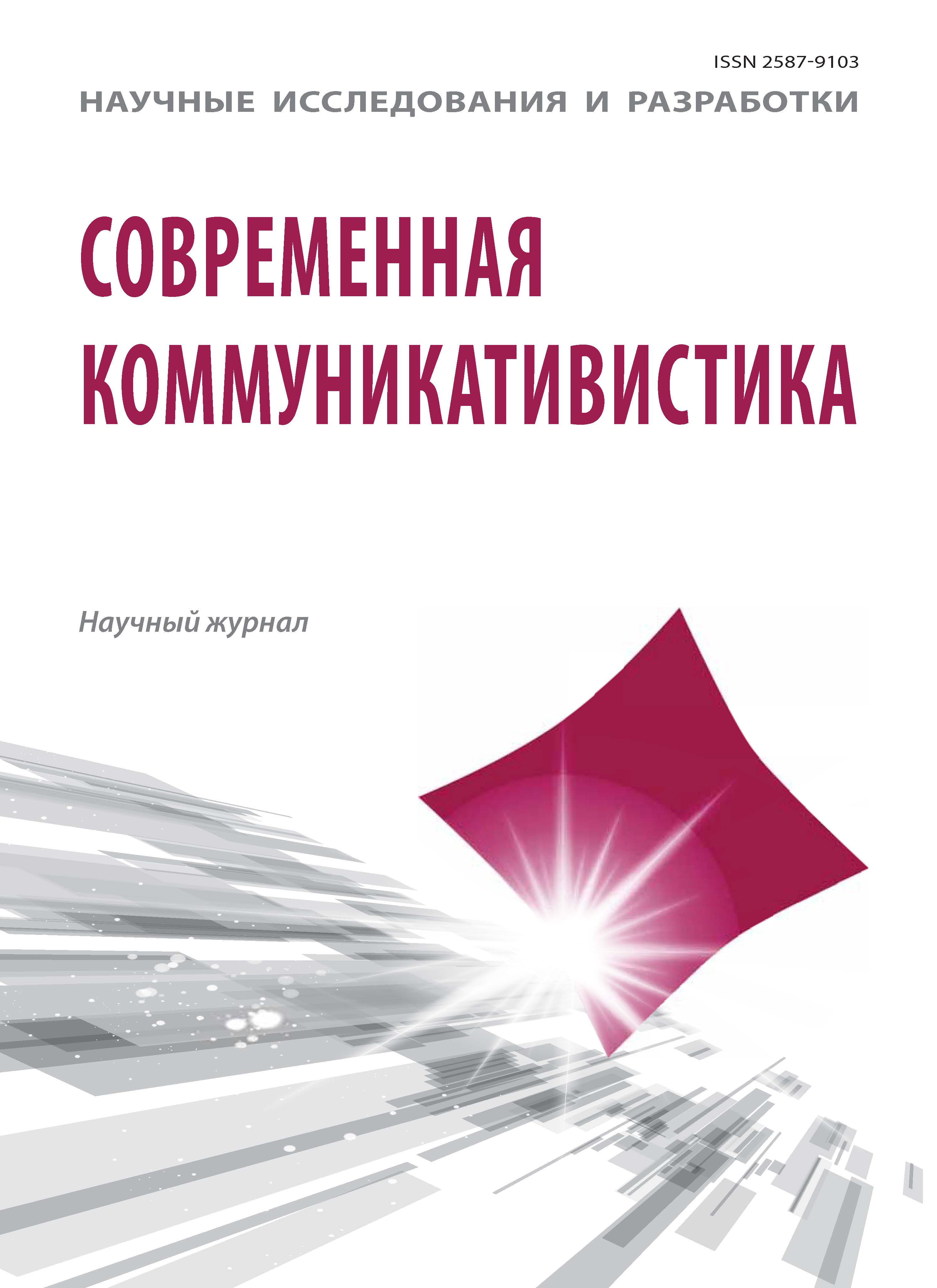Russian Federation
Russian Federation
The article is devoted to the issues of communicative syntax, namely the problems of ellipsis, the identification of criteria for ellipticity. The aim of this article is to identify the communicative potential of elliptical sentences, their prevalence in the speech of the characters of a work of art, as well as to identify their stylistic functions and grammatical features. The status of colloquial speech in general and German colloquial speech in particular, the concept of the norm and the criteria of normativity are considered. The article attempts to define and systematize the types of elliptical sentences, their syntactic features and communicative functions in colloquial speech. The data of practical researches are considered. An ellipse is defined as a violation of the mandatory compatibility within a syntactic construction. Based on the criterion of dependence of elliptic sentences on the context, a classification of ellipses is proposed as contextually conditioned and contextually unconditioned (situational). In question-and-answer units, ellipses perform communicative functions: question, answer, motivation, emotional evaluation, questioning. Elliptic sentences are more connected to the context than full sentences, and from this point of view they are synsematic. The analysis showed that ellipses are divided into two large groups in relation to which member of the sentence implies an unrealized valency: main or secondary. In elliptical sentences, one or both of the main members of the sentence may be missing. In the group of a compound predicate, both the nominal and the main part can be omitted, while the omission of the latter occurs almost twice as often. The article gives practical recommendations to German language teachers on how to use the patterns of constructing elliptical sentences when teaching dialogic speech.
communicative syntax, ellipse, colloquial speech, context, theory of actual sentence division, valence
1. Barkhudarov L. S. Struktura prostogo predloženija sovremennogo anglijskogo jazyka [Structure of a simple sentence of modern English language]. Moscow, URSS Publ., 2019. 256 p. (in Russian)
2. Devkin V. D. Nemetskaya razgovornaya rech: Sintaksis i leksika [Spoken German: Syntax and Vocabulary]. Moscow, Mezhdunarodnye otnosheniya Publ., 1979. 256 p. (in Russian)
3. Zemskaya E. A., Kitaygorodskaya M. V., Shiryaev E. N. Russkaya razgovornaya rech: Obshchie voprosy. Slovoobrazovanie. Sintaksis [Russian colloquial speech: General issues. Word formation. Syntax]. Moscow, Nauka Publ., 1981. 276 p. (in Russian)
4. Kuzmina E. V. Princip yazykovoj ekonomii v spontannoj pismennoj forme rechi (na materiale ispanoyazychnyh tekstov socialnyh setej Facebook, Twitter, Tuenty) [Linguistic economy principle in written spontaneous speech (on texts of Spanish social networks Facebook, Twitter, Tuenty)] // Nauchnye issledovaniya i razrabotki. Sovremennaya kommunikativistika [Scientific Research and Development Modern Communication Studies]. Moscow, 2016. V. 5(1). pp. 29-32 (In Russian) DOI:https://doi.org/10.12737/17559
5. Lingvisticheskij enciklopedicheskij slovar [Linguistic Encyclopedic Dictionary]. Moscow, Sovetskaya enciklopediya Publ., 1990. 683 p. (in Russian)
6. Mendybaeva R. K. Lingvostilisticheskie osobennosti ellipsa i ego funkcionirovanie v stile yazyka hudozhestvennoj literatury. PhD Thesis. [Lingvo-stylistic peculiarities of the ellipsis and its functioning in the style of the language of fiction]. Moscow, 1976. 29 p. (In Russian)
7. Papusha I. S. Specifika funkcionirovaniya slozhnogo sintaksicheskogo celogo v mediatekstah [The peculiarities of functioning of the complex syntactic whole in the media text]// Nauchnye issledovaniya i razrabotki. Sovremennaya kommunikativistika [Scientific Research and Development Modern Communication Studies]. Moscow, 2016. V. 5. (6). pp. 24-27. (In Russian) DOI:https://doi.org/10.12737/22774
8. Skovorodnikov A. P. O kriterii elliptichnosti v russkom sintaksise [On the criterion of ellipticity in Russian syntax] // Voprosy yazykoznaniya [Topics in the study of language]. Moscow, 1973. V. 3. pp. 118-123 (In Russian)
9. Altmann H., Hahnemann S. Prüfungswissen Syntax: Arbeitstechniken, Klausurfragen, Lösungen / H. Altmann, S. Hahnemann. 4., durchges. Auflage. UTB: Sprachwissenschaften. Göttingen: Vandenhoeck & Ruprecht, 2010. 224. S.
10. Die Ellipse : neue Perspektiven auf ein altes Phänomen / hrsg. von Mathilde Hennig. - Berlin [u.a.] : De Gruyter, 2013. Online-Ressource : graph. Darst. (Linguistik - Impulse & Tendenzen ; 52) URL: https://www.degruyter.com/document/doi/10.1515/9783110312560/pdf (accessed 25.11.2022).
11. Engel U. Syntax der deutschen Gegenwartssprache / U. Engel. 4., völlig neu bearbeitete Auflage. Berlin: Erich Schmidt Verlag, 2009. 309 S.
12. Eroms H.-W. Syntax der deutschen Sprache / H.-W. Eroms. Berlin; New York : de Gruyter, 2000. 510 S.
13. Fernau J. Ein Frühling in Florenz. München: Ullstein, 1988. 310 S.
14. Helbig G., Buscha J. Deutsche Grammatik. Ein Handbuch für den. Ausländerunterricht / G. Helbig, J. Buscha. Berlin / München: Langenscheidt, 2008. 656 S.
15. Konsalik H. G. Die schweigenden Kanäle. - Köln: Lingen Verlag, 2004. 310 S.
16. Pafel J. Einführung in die Syntax: Grundlagen - Strukturen - Theorien. / J. Pafel. Stuttgart u.a.: Verlag J. B. Metzler, 2011. 264 S.
17. Schendels E. Deutsche Grammatik, Morphologie. Syntax. Text. M., Vysšaja škola, 1988. S. 269-272.







